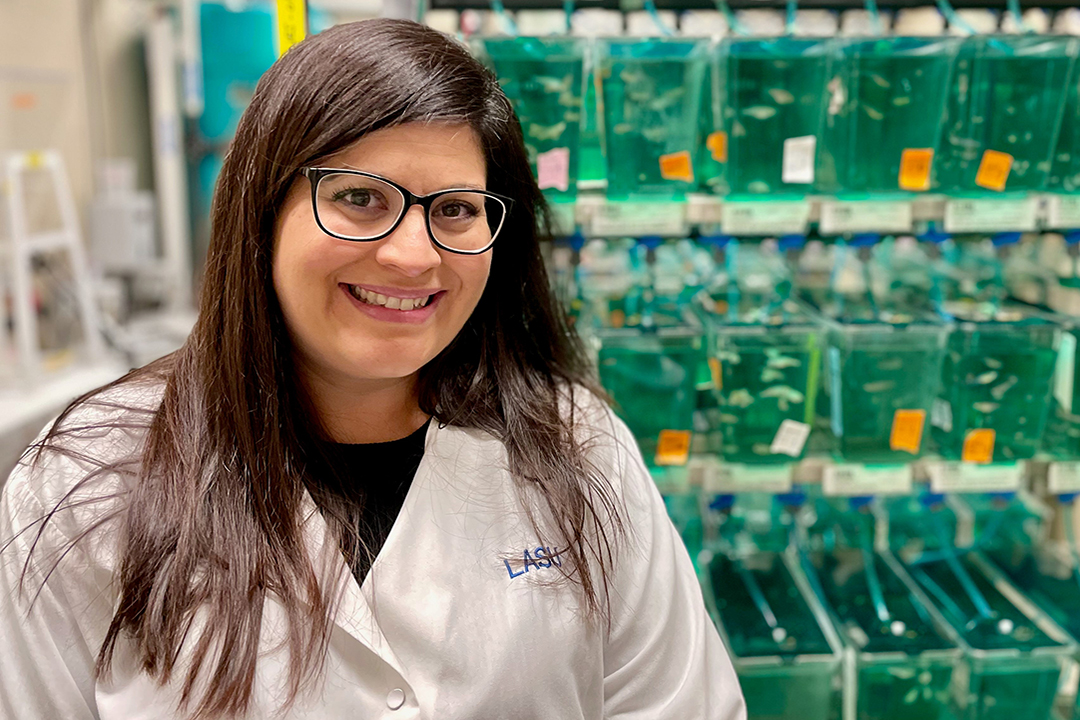
Affairs of the (Zebrafish) Heart: Dr. Michelle Collins
If you've ever sat through a bad date at a restaurant, unsure of what to order, you're still doing better than a typical zebrafish on a date. Dr. Michelle Collins (PhD) said without safety precautions, a zebrafish male and female left together overnight will often eat their embryos.
By RESEARCHERS UNDER THE SCOPEListen to all episodes of the Researchers Under the Scope podcast.
The assistant professor of anatomy, physiology and pharmacology at the University of Saskatchewan's College of Medicine has studied zebrafish for years, using them as a model to examine genetic factors in cardiac development.
"They're actually quite beautiful," she said. "The embryos look almost like a crystal ball."
In this episode, Collins takes us inside her laboratory, where she breeds both typical and genetically modified zebrafish, to better understand irregularities inside the human heart.
"We start to see some early changes in the developing heart that just get worse as the fish ages," she said.
"You start to see that the heart chambers aren't really contracting properly, they're very arrhythmic," said Collins. "They really model what a person that has something like atrial fibrillation would be experiencing later on in life."
In December, Collins published her most recent findings in the Journal of Cardiovascular Development and Disease, noting the public health implications for humans with similar patterns of abnormal heart development.
Her interest in calcium stores, and the way they're regulated in ion channels led her to Discovery Grants last year of nearly $200,000 from the Natural Sciences and Engineering Council of Canada (NSERC).
Collins' first microscope was a Christmas gift. By the fourth grade, she was running experiments at home, thanks to a book from her grandparents
"I had some really great science teachers that really helped propel me into scientific research," said Collins, who became curious about developmental biology.
Today, she works with real-time video feeds, using a high-powered microscope that allows her and her team members to observe zebrafish hearts at up to 150 frames per second, producing detailed video images of the vascular system in fluorescent colour.
"It's very gentle on live samples, which is really instrumental to what we do because we want to look at a beating heart. We don't want to blast it with lasers," said Collins.
"We have this sort of a spinning disc, which allows less phototoxicity from the laser, and it also can acquire movies really quickly," she added.
Her hope is to one day match mutations in the zebrafish genes with mutations in patients with genetic heart defects.
"Can we use these new genes that we've identified to screen patients and figure out if this could be an underlying cause of their cardiac arrhythmia?”
